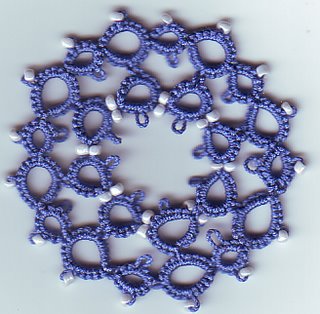Here is my next installment of Herring Bone Stitches.

As you can see, I have not worked the stitches in any particular order.
1. The first one is the Double Herring Bone Method-I. Here one row of Herring Bone stitches is simply superimposed over a previously worked row.
I feel the stitch looks more complete if it is started and finished as shown in this sampler.
2.The second one is the Basic Herring Bone stitch laced with a contrast thread.

Click on picture to Enlarge.
3. I've always wondered if the Cretan stitch is a kind of Herring Bone Stitch. It certainly looks like one.
4. The stacked Herring Bone Stitch - nothing special there but for the effect.
5. The Double Herring Bone Stitch - Method-II. The difference between this and Method-I is the second set of Herring bone Stitches is interwoven with the previous one.
6. I loved the 4 rows of closely spaced H.B.S in Sharon's sampler and wanted to try it out. However having just worked the interwoven Double H.B, I got side-tracked. After a few initial glitches, this stitch was fun to do.
I used three strands of stranded cotten for working the 1st and 3rd rows and 6 strands for working the 2nd and fourth rows. It has a lacy effect.
7. Four rows of H.B stitches superimposed as in Sharon's sampler.
8. I used 6 strands of metallic thread to couch this ribbon. In the process I learnt a valuable lesson. Trying to pull 6 strands of metallic thread through closely woven fabric damages both the fabric and the thread.
9. The basic H.B done with silk ribbon.
10. The Double H.B-M-II is the foundation for this interlacing stitch. This stitch is frequently used in
Kutch work - an Ethnic Indian Embroidery and also in Armenian Embroidery.
There are a few more variations I'd like to try out. If time permits, I'll do it today. Otherwise, I'll post pictures as soon as i complete it.



